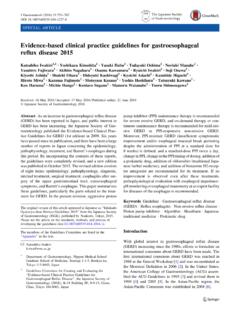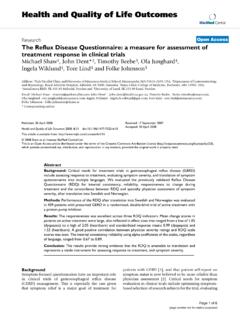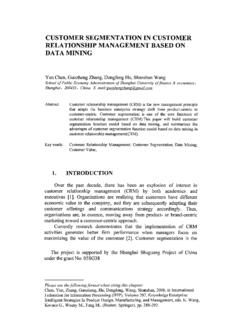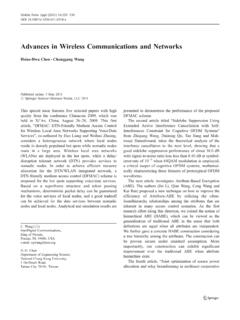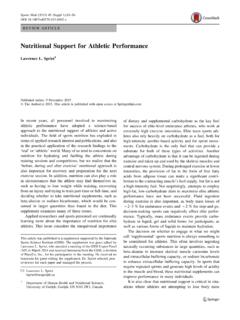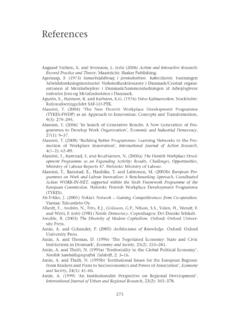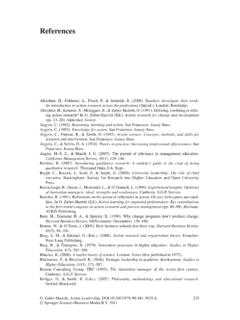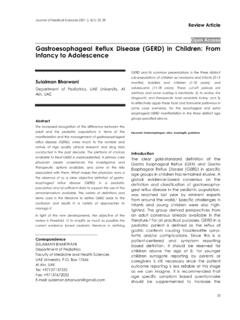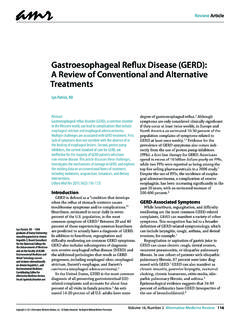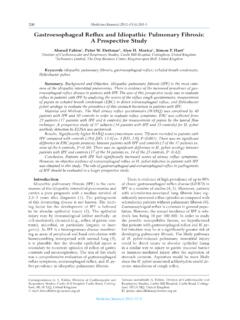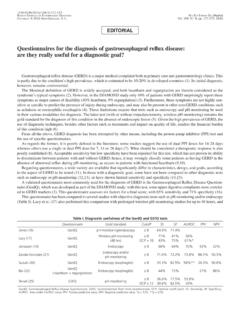Transcription of Shedding light on the epidemiology of …
1 EDITORIALS hedding light on the epidemiology of gastroesophagealreflux disease in India a big step forwardSrinivas Gaddam&Prateek SharmaReceived: 11 June 2011 /Accepted: 1 July 2011 /Published online: 23 July 2011#Indian Society of Gastroenterology 2011 gastroesophageal reflux disease (GERD) is defined as acondition which develops when the reflux of stomach contentscauses troublesome symptoms and/or complications. It isconsidered troublesome when mild symptoms occur two ormore days a week, or moderate/severe symptoms occur one ormore days a week [1]. This global definition underscores theimportance of patient symptoms in the diagnosis of western countries, GERD is the most commongastrointestinal disease [2]. It is associated with a hugeeconomic burden and decreased quality of life [3 7]. Inaddition, GERD can be associated with worrisome compli-cations such as strictures, Barrett s esophagus (BE) andrarely, esophageal adenocarcinoma (EAC) [8].
2 GERD symptoms occur at least once a month in 44%, once aweek in 20%, and daily in 7% of the adult US population[9 11]. However, studies describing the epidemiology ofGERD in India and for that matter in south-east Asia, aresparse and traditionally, GERD is thought to be uncommonin the developing countries [12]. Three important cohortstudies published in this issue of thejournal, althoughusing slightly varying GERD definitions, draw our attentionto the epidemiology of GERD in India and highlight that itsprevalence may be similar to that in western of GERD in IndiaThe Indian Society of Gastroenterology formed a task forceto study the prevalence of GERD and its risk factors. Thestudy by Bhatia et al. [13] is a multi-center prospectivequestionnaire- based study of 3,224 urban and rural patientsand reports the findings of this task force. This studyreports a weekly prevalence of in the Indianpopulation.
3 Thisjournalalso reports other questionnaire - based cross-sectional studies by Sharma et al. and Kumar etal., which also show a high prevalence of GERD ( ). In another study, Ramu et al. evaluated theprevalence of GERD in 400 pregnant women and foundthat the prevalence of GERD in the first trimester , and approximately 50% during the second and thirdsemesters. The prevalence rate in the first trimesterprobably reflects the prevalence of GERD in the generalpopulation. These studies emphasize that the prevalence ofGERD in India is likely to be between 8% and 19%, whichis comparable to GERD prevalence rates published inwestern countries. Additionally, these studies highlight thatthe risk factors for GERD are related to diet and lifestylechoice; which are both modifiable risk factors. See Tablefor a detailed comparison of these studies (Table1).Is there a true increase in the prevalence of GERDin India?
4 Traditionally, GERD has been thought to be a disease of thewestern world. Prevalence rates have been estimated to beS. Gaddam:P. SharmaDivision of Gastroenterology and Hepatology,Veterans Affairs Medical Center,Kansas City, MO, USAP. SharmaDivision of Gastroenterology and Hepatology,University of Kansas School of Medicine,Kansas City, KS, USAP. Sharma (*)Department of Veterans Affairs Medical Center,4801 E. Linwood Blvd,Kansas City, MO 64128-2295, USAe-mail: J Gastroenterol (May June 2011) 30(3):105 107 DOI in Asia when compared to that of the westerncountries (<5% vs. 10% to 20%) [12]. The current articleson GERD in thisJournal[13 16] demonstrate that contraryto previous belief, the prevalence of GERD in India is infact much higher and similar to that reported in the Westerncountries. However, it is unclear if this represents a trueincrease in the prevalence or is the result of a betterunderstanding of the disease symptoms, increased aware-ness of acid reflux, or the recent conduct of high qualityepidemiological studies.
5 In recent years, the progress in theIndian society on both socioeconomic and educationalfronts has led to changes in diet and lifestyle choices. Thisadvancement has also resulted in better health educationand awareness. Improved knowledge of the disease canresult in an increased recognition of GERD; therebycausing an apparent increase in its prevalence. Nonetheless,the impact of adaptation of western diet and lifestyle ,increasing obesity, reducingH. pylorifrequency etc. onincrease in prevalence of GERD cannot be ruled with evaluating the epidemiology of GERDin IndiaIndia is a multi-linguistic and multi-cultural society. This canprove to be a challenge when conducting epidemiologicalstudies. English and Hindi are widely spoken in most largecities and metropolitan areas; however, there is a large,significant population that only speaks their local languageor dialect. One of the critical difficulties in conductingbiomedical research in such a setting is in translating technicalEnglish terminology into a local language or dialect.
6 It islikely that some of the words may lose meaning intranslation, such that the word-for-word translation maycarry a completely different meaning. Thus it is impor-tant to meticulously translate terminology and validatedquestionnaires into the local dialect making sure that theessence of the terminology is not lost in this , a consistent definition of GERD has notbeen widely adopted in studies conducted in India andmay also be a challenge in various regions of the the prevalence of GERD can be profoundly affectedbased on the definition, for the prevalence rates to becomparable across studies, all future endeavors should use astandardized gaps and future directionsThe estimation of prevalence of GERD in India marks thefirst step in enhancing our understanding of GERD. Despitethe numerous studies on GERD worldwide, there areseveral gaps in our knowledge of this disease . Futurestudies on GERD in India should attempt to address severalof these gaps while avoiding the pitfalls that have limitedthe interpretation of the previous true population- based prevalence of GERD and riskfactors should be assessed.
7 This could lead to the implemen-tation of preventive strategies at the population level thatcould potentially reduce the burden of GERD in the impact of GERD on quality of life in these patients andwhether treatment will lead to improved outcomes should beevaluated. based on endoscopy, patients with GERD areclassified into erosive esophagitis, non-erosive refluxdisease or Barrett s esophagus. Future studies shouldevaluate the prevalence and the longitudinal overlapTable 1 Summary of studies evaluating the prevalence of gastroesophageal reflux disease (GERD) in IndiaStudyPopulationDefinition of GERDP revalenceIndependent risk factorsBhatia et al. [13]3,224 urban and ruraladult populationHeartburn and/or regurgitationat least once a weekfor at least 1 ofnon-vegetarian foodSharma et al. [14] 4,039 employees ofa tertiary care centerSymptoms score reflectingseverity and BMIC urrent smokingAsthmaHypertensionKumar et al.
8 [15] 905 urban and ruraladult populationSymptoms score reflectingseverity and ageSendentary lifestyleSerum LDL >150 mg/dLHigh consumption of meatLow consumption of salted teaLow consumption of fresh fruitsRamu et al. [16]400 pregnant womenPresence of heartburnand/or regurgitation forat least a weekFirst trimester: trimester: trimester: studies define GERD using a symptom score based on severity and frequency106 Indian J Gastroenterol (May June 2011) 30(3):105 107between the various phenotypes of GERD. These find-ings can have implications on the understanding ofmucosal injury and symptoms, and on novel therapeuticinterventions to prevent complications. Furthermore,studies should employ physiologic testing such as pHstudies and symptom associated probabilities (assesscorrelation with symptoms) to improve our understandingof this symptom driven patients with GERD are at a higher risk for BE[17], it is seen that the prevalence of BE is low in , with the new findings of high prevalence ofGERD in India, there is a renewed interest in revisiting theprevalence of complications of GERD such as BE and otherextra-esophageal manifestations such as the reflux coughsyndrome, reflux laryngitis syndrome, reflux asthma syn-drome and reflux dental erosion syndrome.
9 Future studiesshould define the extra-esophageal manifestations of GERDin , very little is known about GERD in India. Atthis time, one thing is certain the prevalence of GERD inIndia is higher than previously estimated and appears to besimilar to that of the western countries. Several factors suchas increasing obesity, change in diet and lifestyle, smoking,use of specific food types can affect the prevalence ofGERD in this rapidly progressing society. With betterunderstanding of the risk factors, it may be possible totarget an intervention directed at the main cause of thisrapid increase of GERD in India. Furthermore, futurestudies should perform physiological studies and endoscop-ically evaluate GERD to gain a better understanding of itscause and Vakil N, van Zanten SV, Kahrilas P, Dent J, Jones R. The Montrealdefinition and classification of gastroesophageal reflux disease : aglobal evidence- based consensus.
10 AmJ Gastroenterol. 2006;101:1900 Kahrilas PJ. Clinical practice. gastroesophageal reflux disease . NEngl J Med. 2008;359:1700 Shaheen NJ, Hansen RA, Morgan DR, et al. The burden of\gastrointestinal and liver diseases, 2006. Am J ;101:2128 Wahlqvist P, Reilly MC, Barkun A. Systematic review: the impactof gastro-oesophageal reflux disease on work Pharmacol Ther. 2006;24:259 Dent J, El-Serag HB, Wallander MA, Johansson S. Epidemiologyof gastro-oesophageal reflux disease : a systematic review. ;54:710 El-Serag HB. Time trends of gastroesophageal reflux disease : asystematic review. Clin Gastroenterol Hepatol. 2007;5:17 Wong BC, Kinoshita Y. Systematic review on epidemiology ofgastroesophageal reflux disease in Asia. Clin GastroenterolHepatol. 2006;4:398 Fennerty MB. The continuum of GERD complications. CleveClin J Med. 2003;70 Suppl 5:S33 Nebel OT, Fornes MF, Castell DO. Symptomatic gastroesophagealreflux: incidence and precipitating factors.
